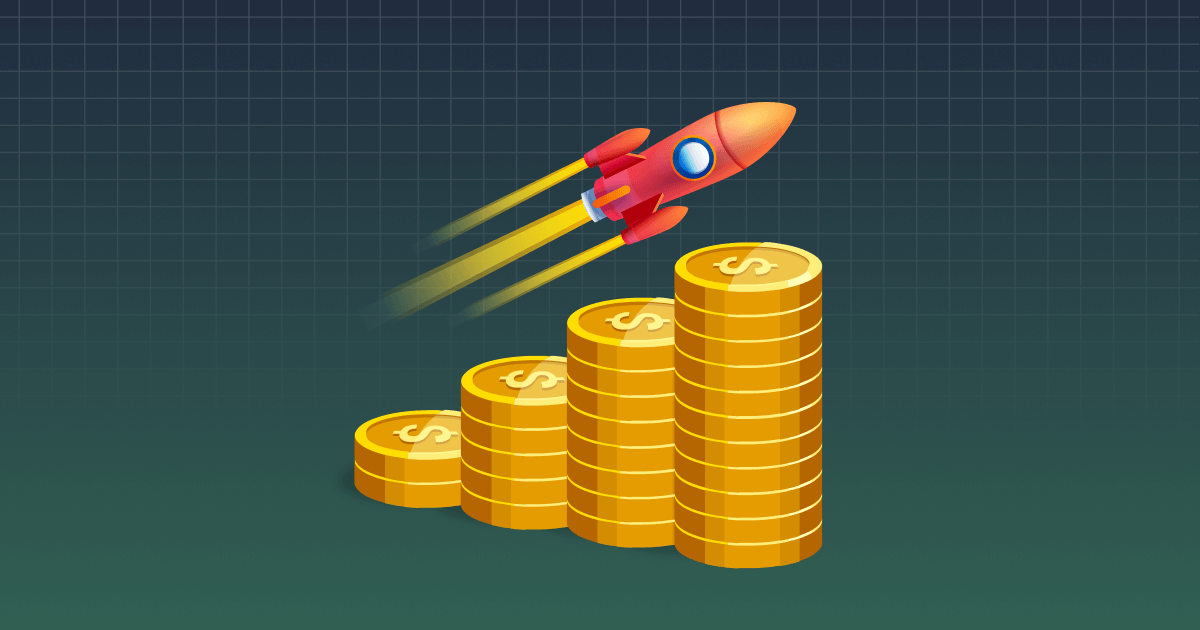
In today’s fast-paced world, everyone wishes to have a healthy bank account and the financial freedom to pursue their dreams. However, the road to financial success is not always easy. Many struggle to find the best ways to grow their money and maximize their wealth.
Luckily, there are many strategies and investment opportunities available that can help you achieve your financial goals.
This article will explore the best ways to grow money and maximize wealth.
Buckle up and read on.
Top 7 Tips to Grow Your Money
1. Build an Emergency Fund
An emergency fund is a pool of money for unexpected events or emergencies, such as sudden job loss or medical bills. The purpose of an emergency fund is to provide a cushion against financial difficulties that could otherwise put you in debt or jeopardize your financial stability.
There are several reasons why having an emergency fund is essential.
Firstly, knowing you have a safety net in an emergency gives you peace of mind. You can rest easy knowing that you are financially prepared to handle any unexpected situation that comes your way.
Secondly, an emergency fund helps you avoid debt. Suppose you don’t have an emergency fund, and an unexpected event occurs. In that case, you may have to borrow money from friends or family, take out a loan, or use your credit card. This can quickly spiral into a cycle of debt that can be difficult to get out of. You can avoid these situations with an emergency fund and be confident in handling any financial setback.
Thirdly, an emergency fund can help you grow your money. By having a pool of money set aside for emergencies, you can avoid dipping into your other savings, which can disrupt your long-term financial goals.
You can also invest your emergency fund in a high-yield savings account or other low-risk investment vehicles that can provide a better return on your investment.
To build an emergency fund, determine how much you need to save. Experts recommend saving enough money to cover three to six months’ expenses.
Suppose your monthly expense is INR 30,000. Your emergency fund can range between INR 90,000 (3x monthly expenses) to INR 180,000 (6x monthly expenses).
Having said that, the actual amount may vary depending on individual circumstances.
2. Avoid Debt Traps
When you accumulate debt, you also accumulate interest expenses, which can be a significant burden over time. Therefore, it is essential to avoid impulsive buying and to utilize your money systematically to maximize savings in the long run.
Debt can cause stress and affect your financial health negatively. To avoid falling into debt, prioritize your expenses and set a budget.
Track your spending, focus on important items, and avoid frivolous purchases. Pay off your debts on time and try to pay more than the minimum amount due to reducing the interest.
In addition, consider consolidating your debts into a single loan with a lower interest rate to make it easier to manage and pay off.
3. Start investing Early
It is essential to start saving and investing early in life as it allows more time for compound interest to work its magic.
Compound interest is the interest earned not only on the principal amount but also on the accumulated interest. The longer you invest, the more compound interest can work in your favor, resulting in more significant returns in the long run.
Let’s say you invest $1,000 in an instrument that earns a 10% annual return.
After one year, your fund balance would be $1,100 ($1,000 principal + $100 return). If you leave that money and earn another 10% interest the next year, your balance would grow to $1,210 ($1,100 principal + $110 return).
Over time, the interest earned on your initial investment can compound, resulting in a larger balance. This is the power of compounding!
Furthermore, starting early also provides more flexibility in terms of investment options. With more time, you can consider various investment options, such as crypto, stocks, mutual funds, etc.
This provides a diversified portfolio that can help mitigate risk and maximize returns.
4. Diversify your Investments
Diversification is a key element in investment planning as it minimizes risk and helps maximize your portfolio returns.
Investing all your money in a single asset or asset class can lead to losses if that asset or class performs poorly.
Therefore, diversifying your investments across different assets, sectors, and geographies can help mitigate the risks and improve your chances of earning higher returns. The concept of diversification is based on the principle of not putting all your eggs in one basket.
Suppose you spread your investments across various assets. In that case, the impact of one asset’s poor performance will be balanced out by the other assets’ positive performance. This helps in minimizing the overall risk and provides stability to your portfolio.
For instance, your entire portfolio value will be affected if you have a portfolio with only stocks and the stock market crashes.
On the other hand, if you diversify your portfolio by including other assets such as crypto, bonds, real estate, or commodities, the stock market crash will have less impact on your portfolio value.
5. Invest Smartly
Understanding your financial goals for the future will help you choose the right investment portfolio.
Various options are available, such as Recurring Deposits (RD), National Pension Schemes (NPS), Public Provident Funds (PPF), Fixed Deposits (FD), Stocks, Bonds, Cryptocurrencies, and Mutual Funds.
Investing is a vital aspect of achieving financial security. Thus, choosing the right investment option can make a huge difference.
If you have short-term goals, you can opt for savings bank accounts, FDs, or RDs. However, if you have long-term goals, such as retirement planning, Cryptos, Equity, NPS, and Mutual Funds can be good options.
6. Consistency
Investment is not a one-time activity but a continuous process that requires regular attention and management.
Thus, consistency is critical when investing. Consistent investment helps in creating a disciplined approach toward achieving financial goals. It is important to stay committed to the investment plan and not get swayed by short-term market fluctuations.
Systematic Investment Plans (SIPs) allow investors to save and grow their money consistently in the long run. This applies especially to investment portfolios such as mutual funds, crypto, and stocks.
7. Review your Financial Plan periodically
In the world of finance, change is inevitable. It is crucial to prioritize your needs and requirements and be open to changing your investment plan when necessary.
Just as sailing in the same boat can only take you to a particular spot, sticking to the same investment plan may limit your potential for growth and profits. Therefore, it is crucial to regularly review your investments and make changes based on market conditions and your personal financial goals.
Many people make the mistake of sticking to the same investment plan for years without considering if it still aligns with their needs and goals. To ensure that your investments work for you, you must review your portfolio and make adjustments as needed regularly.
You may change your investment plan by diversifying your portfolio, shifting to different types of funds, or changing your risk tolerance. If you have a high-risk tolerance, you can explore options like crypto and stocks. If you want stability, you may opt for fixed-income securities like bonds.
Conclusion
Growing your wealth requires discipline, patience, and a long-term perspective. It’s not a get-rich-quick scheme or a one-size-fits-all solution.
The best way to grow your money is to start early, invest regularly, diversify your portfolio, and stay informed about economic trends and market conditions.
Remember, the road to financial success is not always smooth, and there will be bumps along the way.
But with perseverance, smart planning, and a commitment to your financial goals, you can grow your money and maximize your wealth over time.
So, keep your eyes on the prize and stay focused on your financial journey. The rewards will be worth it.
FAQs
1. What are some of the best investment options for growing my money?
The best investment options for growing your money include stocks, mutual funds, exchange-traded funds (ETFs), real estate, and small business investments.
Each option has risks and potential rewards, so it’s important to research, assess your risk tolerance, and consider your financial goals before investing.
A diversified portfolio with a mix of these investment options can help you maximize your wealth over the long term.
2. What are some common mistakes to avoid when investing?
Some common mistakes to avoid when investing include
- Failing to do proper research
- Not diversifying your portfolio
- Investing based on emotions or hype
- Trying to time the market
- Not considering your risk tolerance
Avoiding these mistakes can help reduce your risk of financial loss and increase your chances of achieving your financial goals.
3. What are some strategies for diversifying my investment portfolio?
One strategy for diversifying your investment portfolio is to invest in different asset classes, such as stocks, bonds, and real estate.
Another strategy is to invest in different sectors and industries to spread your risk. It’s also important to consider investing in different geographic regions and currencies.
By diversifying your portfolio, you can reduce your risk of loss and maximize your potential for long-term growth.




